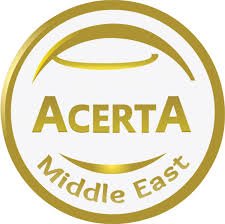
In industries like oil and gas, petrochemicals, and manufacturing, the risks of fires and gas leaks pose significant threats to workers, equipment, and the environment. Fire and Gas (F&G) Mapping and Design is a critical safety process that ensures detection systems are strategically placed to identify hazards early and mitigate their consequences effectively. By analyzing potential fire and gas release scenarios and optimizing detector placement, this process helps prevent catastrophic incidents. This article delves into the principles, methodology, and practical applications of Fire and Gas Mapping and Design, with insights into how Cormat Group implements robust systems to safeguard high-hazard facilities.
Fire and Gas Mapping and Design is a systematic approach to assessing and optimizing the placement and performance of fire and gas detection systems in facilities handling flammable or toxic substances. It involves mapping potential release points, modeling hazard dispersion, and designing detection systems to ensure timely and reliable identification of fires or gas leaks. These systems, such as flame detectors, gas sensors, and alarms, are critical for triggering emergency responses, like shutdowns or evacuations, to prevent escalation.
The process is integral to safety management in industries regulated by frameworks like the UK’s Control of Major Accident Hazards (COMAH), ATEX directives, or IEC 60079 standards. For example, in a refinery, F&G mapping might identify optimal locations for gas detectors to monitor methane leaks, ensuring rapid detection and response. The goal is to reduce risks to As Low As Reasonably Practicable (ALARP) by ensuring detection systems are effective and reliable under all conditions.
F&G Mapping and Design is vital for several reasons, making it a cornerstone of safety in high-hazard environments:
A 2023 report by the Health and Safety Executive (HSE) found that facilities with optimized F&G systems reduced incident response times by 50%, highlighting their critical role in safety management.
F&G Mapping and Design is built on several core elements that ensure a comprehensive safety strategy:
Identify potential fire and gas release hazards, such as flammable gases (e.g., methane), toxic gases (e.g., hydrogen sulfide), or combustible liquids. Sources include pipelines, storage tanks, or process units.
Define credible release scenarios, such as leaks, spills, or equipment failures, that could lead to fires or gas accumulations. This includes assessing release rates, volumes, and environmental conditions.
Model how flammable or toxic gases disperse, considering factors like wind speed, terrain, and facility layout. This determines the areas at risk and informs detector placement.
Select and position detection systems, such as:
Evaluate whether detectors provide adequate coverage, ensuring no gaps in high-risk areas. This often involves mapping detection zones using software tools.
Link F&G systems to emergency responses, like automatic shutdowns, fire suppression, or evacuation alarms, to ensure a coordinated response.
Demonstrate that the F&G system reduces risks to ALARP, balancing the cost of additional detectors against the safety benefits achieved.
Create detailed F&G maps and design reports, showing detector locations, coverage areas, and performance criteria, to support audits and compliance.
Conducting F&G Mapping and Design requires a structured approach that integrates risk assessment, modeling, and engineering expertise. Here’s a step-by-step guide:
Identify the facility or process to be analyzed, such as a gas processing unit or a chemical storage area. Define boundaries to focus the analysis.
List flammable and toxic substances, using Material Safety Data Sheets (MSDS) or process inventories. Identify potential release points, such as valves, flanges, or tanks, using tools like Hazard and Operability (HAZOP) studies or Bow-Tie Analysis.
Define credible scenarios, such as:
Use software to model gas dispersion, such as:
Model fire scenarios, such as jet fires or pool fires, using tools like Flaresim or Computational Fluid Dynamics (CFD). Calculate heat radiation (e.g., kW/m²) and flame spread to determine detection needs.
Select detectors based on hazard type:
Use mapping software to assess detector coverage, ensuring no gaps in high-risk areas. Tools like Detect3D or Map3D create 3D coverage maps, showing detection zones and blind spots.
Link F&G systems to:
Show that the F&G system reduces risks to ALARP by:
Create detailed F&G maps and design reports, including:
Install detectors according to the design, ensuring proper calibration and testing. Train personnel on:
Regularly test F&G systems through functional checks and simulations. Review the design to reflect changes in operations, hazards, or regulations. Cormat Group follows this process to ensure their F&G systems are effective and compliant.
Fire and Gas Mapping and Design is a vital tool for ensuring safety in high-hazard industries. By strategically placing detectors and modeling hazards, it enables rapid detection and response, preventing fires, explosions, and toxic exposures. Cormat Group demonstrates how a rigorous F&G process drives safety excellence, protecting lives, assets, and the environment. Despite challenges like complex environments and cost constraints, technology, stakeholder collaboration, and regular reviews can overcome them. As industries evolve, F&G Mapping and Design will remain essential for building safer, more resilient workplaces.
Please get in touch with our specialist.
Sultan International Tower
P.O. Box 41233,
Abu Dhabi, U.A.E.
Landline: +971 2 622 3535 Ext: 303
Cormat-Al Bunyan Vision Contracting
131 street, Al Muruj, Abha, KSA

Building 2,
Guildford Business
Park Road, Guildford.
Surrey. UK. GU2 8XG.
Sultan International Tower
P.O. Box 41233,
Abu Dhabi, U.A.E.
Landline: +971 2 622 3535 Ext: 303
Cormat-Al Bunyan Vision Contracting
131 street, Al Muruj, Abha, KSA

Copyright 2025 Cormat Group | All Rights Reserved | Certified